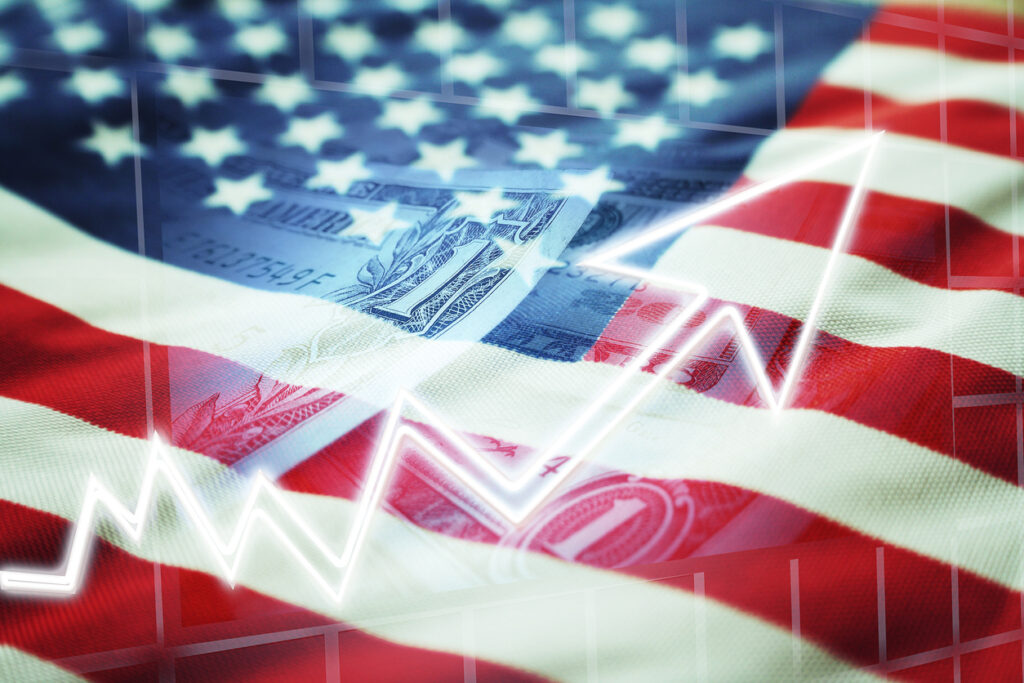US Inflation Quickens to 9.1% Increasing Pressure on the Fed to Act Big
Consumer Price Index Climbed 1.3% From May Most Since 2005
Increase Reflected Higher Gasoline Shelter and Food Costs
Last month, US inflation surged once again to a new four-decade high, presumably bolstering the Federal Reserve’s determination to quickly increase interest rates at the risk of halting economic growth.
According to statistics released by the Labour Department on Wednesday, the consumer price index increased 9.1% in a broadly based rise, marking the biggest increase since 1981’s end. The commonly used inflation indicator jumped by 1.3% from one month earlier, the highest rise since 2005 and reflects rising petrol, housing, and food prices.
Based on the Bloomberg poll medians, economists predicted a 1.1% gain from May and an 8.8% increase from year to year. This was the fourth-straight month that the headline annual figure topped estimates.
Above expectations, the so-called core CPI, which excludes the more erratic food and energy components, increased by 0.7% from the previous month and by 5.9% from a year earlier.
While shorter-term Treasury rates increased and the dollar gained strength, the S&P 500 index opened lower.
The red-hot inflation results confirm that price pressures are pervasive and rampant throughout the economy and that they are having a more negative impact on real wages, which have decreased to their lowest level ever in records going back to 2007. The inflation report adds pressure on President Joe Biden and congressional Democrats whose popularity has fallen ahead of the November elections and will put Fed officials on an aggressive policy track to rein in demand.
Future Risks
Housing is one of several variables that might keep price pressures high for longer. Supply chains and the forecast for inflation are also in danger from geopolitical issues like Covid lockdowns in China and Russia’s conflict in Ukraine.
“Rather than cooling down, inflation is heating up,” Sal Guatieri, senior economist at BMO Capital Markets, said in a note. “While a pullback in gasoline costs in July and reported retail discounting will help tamp down the flames, the broad pressure in the core rate, led by plenty of inertia in rents, suggests inflation may not peak for a while and might remain stubbornly high for longer than anticipated.”
In response to ongoing inflation and robust employment and pay growth, Fed policymakers have already indicated a second 75 basis-point increase in interest rates later this month. The change was already priced in by traders even before the statistics were revealed. They now estimate that there is a one in three probability that it will be a full percentage point (100 basis-points).
The higher and faster that the Fed goes, increases the risks for a potential US recession, which several economists see in the next 12 months. Even so, the labour market has held strong, adding nearly 400,000 jobs last month.
Last month, the cost of basic essentials continued to rise dramatically. In June, gas prices increased 11.2% over May. Prices for energy services, such as electricity and natural gas, rose by 3.5%, which is the highest rise since 2006.
This week, Biden is visiting the Middle East to meet with Saudi and other Gulf officials to discuss energy production in an effort to bring down the high gas prices. In June, national average retail gas prices exceeded $5.00, however, they have since started to decline.
In contrast, the cost of food increased by 1% and 10.4% from a year earlier, the highest increase since 1981.
There’s reason to believe that food and energy costs are subsiding, according to Wells Fargo & Co. economists. Particularly for groceries, “we suspect more significant easing ahead as raw material, transportation and wage costs have started to cool,” they said in a note.
Other Sectors
While home sales have slowed in recent months due to higher mortgage rates, economists expect rental inflation to continue to increase because it takes time for price changes to feed into the CPI.
The cost of hotel and airline fares, as well as car rentals, fell from May to June, following historic increases in recent months. Even so, recent commentary from US airlines has indicated that travel demand remains strong.
Used car prices, which were a significant contributor to inflation last year, rose 1.6% from a month ago, while new vehicle prices increased 0.7%.
Higher prices continue to eat away at consumer incomes, despite strong nominal wage gains. Inflation-adjusted average hourly earnings dropped 3.6% in June from a year earlier, the 15th straight decline and the largest in data back to 2007, separate data showed Wednesday. That’s started to impact spending — inflation-adjusted consumer expenditures fell 0.4% in May, the first decline this year.
online sources: bloomberg.com, finance.yahoo.com All opinions and views expressed or suggested by the Digital Zeitgeist are not necessarily the same opinions and views held by or suggested by GPM-Invest plus any and all partners, affiliates, parties, or third parties of GPM-Invest. Any type of media distributed by GPM-Invest IS NOT financial advice. Please seek advice from a professional financial advisor

